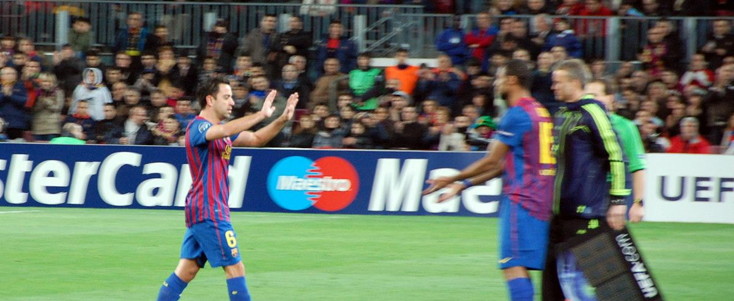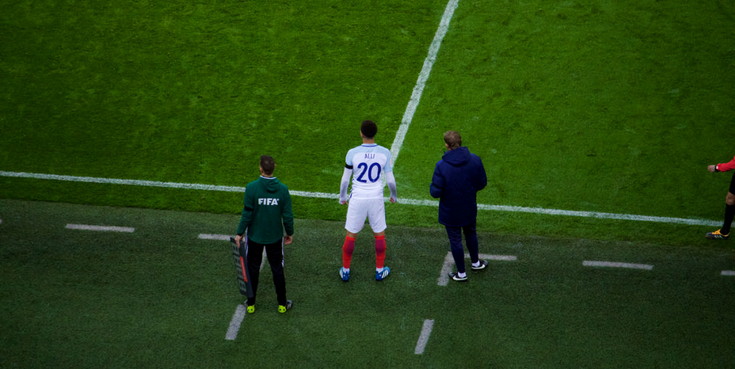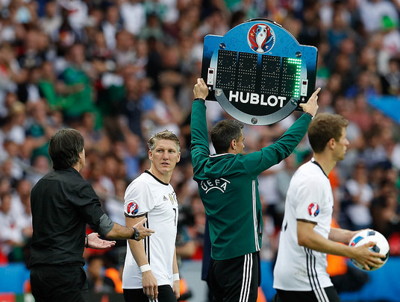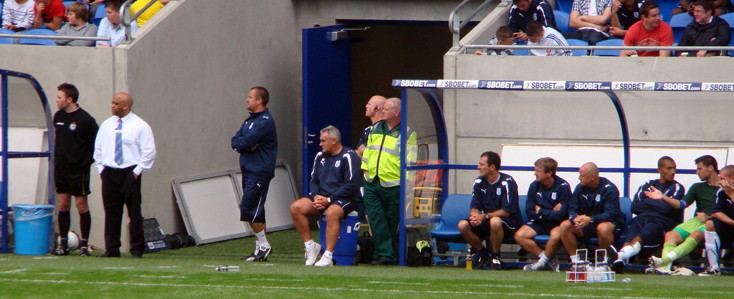
Football fans have always been know-it-alls. For as long as the game has been played, supporters have been saying that the manager of their club has been getting his decisions wrong. The invention and expansion of social media platforms like Twitter and Facebook means that those critics are no longer confined to the corner of a pub after a game and can now tell anyone willing to listen just why the manager has made a mistake with his line-up or tactical choices.
The biggest area that the keyboard warrior is keen to criticise a manager over is their use of substitutions. If they make a substitution and the team’s performance improves then it’s obvious that they should have made it sooner. If they don’t make a change and concede then they clearly should have brought on some fresh legs. The use of the subs bench, or lack thereof, is one of the best ways for a clever-clogs supporter to let the world know that they’re a footballing genius.
Yet what do we actually know about the history of substitutions? Have managers always had a substitutes bench that they could turn to if a player was injured or they wanted to adjust their tactics? If not, what happened when a player couldn’t carry on for long enough to complete the game in the past? How has the way that teams use substitutes changed over years? Is it likely to change much in the future?
This article will explore all of those different questions, fleshing out the facts behind the ways that managers have been able to use their squad since the game first began. We’ll tell you about some famous stories around the notion of making a substitution and begin to give you some idea of the way that the sport of football has adapted since its inception. We can’t promise that the keyboard warriors or pub bores won’t still bang on about the manager getting his choices wrong, but you might be able to tell them that they wouldn’t have even had the choice if the game had been being played a few years before…
The First ‘Substitutes’ in Football

Though the idea of the substitute is seen as something or a relatively recent invention in the history of football, it actually dates back much further than most people realise. The reason why that’s the case is that the term was originally meant in a more literal fashion, with players ‘substituting in’ for those that didn’t turn up in time to play in a match.
The first noted examples of this being the case can be found from the 1850s, when Eton College used ‘emergency’ players to replace some that failed to turn up for the game. The use of the term ‘substitute’ first came about in 1863 in Bell’s Life in London and Sporting Chronicle. A match report stated, “The Charterhouse eleven played a match in cloisters against some old Carthusians but in consequence of the non-appearance of some of those who were expected it was necessary to provide three substitutes”.
Believe it or not, the use of players to replace those that had failed to turn up wasn’t just limited to school football matches.
On the 15th of April 1889, Wales were due to play against Scotland in Wrexham in an international match. Jim Trainer, the Wales goalkeeper didn’t turn up for the game, leading the Welsh team to have to find a goalkeeper from somewhere. A local amateur footballer named Alf Pugh volunteered to play in goal for the Welsh, doing so for around twenty minutes until Sam Gillam arrived at the ground. Gillam was a goalkeeper who had experience playing for numerous clubs around England and Wales, including a brief stint at Bolton Wanderers in the Football League. He replaced Pugh, becoming the first person to be used as a substitute in the modern meaning of the word in international football. It’s like that this is what would have happened in the games at Eton and Chaterhouse too, with the stand-in players being replaced once the original people had turned up to play.
The Introduction Of In-Game Substitutions

Somewhat remarkably, in-game substitutions weren’t introduced to any aspect of the game for another sixty-five years and even then it was only in some qualifying matches ahead of the 1954 World Cup. The first ever player to be substituted in the manner that we understand that word to mean was Richard Gottinger, who came on to replace Horst Eckel in a match between West Germany and Saarland. The notion of a substitute being allowed in most football leagues came about four years later, at which point outfield players could be replaced by one player that was on the bench. Prior to that if a team suffered an injury then the injured player would either need to carry on or else the team that they played for would be reduced in numbers for the remainder of the match.
The Football Association in England, which has never been an organisation that likes to rush decisions, refused to allow substitutes until the 1965-1966 season. When the idea of introducing substitutes was first brought into the British game the FA decided that they needed to keep as tight a leash on it as possible. As a consequence, they only allowed teams to have one player that could be brought on and even then it needed to be as a replacement for an injured player. That remained the case for two seasons, but it soon became clear that managers were bending the rules to their own advantage. Don Revie, the Leeds United manager at the time, was well-known for encouraging his players to feign injury in order to make a change so that he could influence the way that the game was going. Perhaps that’s why the Football Association amended the rules ahead of the 1967-1968 season to allow substitutions to be made for tactical reasons, too.
History was made in English football on the 21st of August in 1965 when Keith Peacock became the first player to come onto the field of play as a sub. It was eleven minutes into Charlton Athletic’s game against Bolton Wanderers when Mike Rose, the Charlton goalkeeper, was injured and needed to be replaced. On exactly the same day, Bobby Knox also made history by being the first substitute to score a goal. He did so for his side Barrow in their game against Wrexham, possibly helping the likes of Revie to realise the impact that substitutes could have in more ways than just replacing an injured player. Knox would have another claim to fame attached to him later in the season. He came on as a substitute goalkeeper during Barrow’s game against Doncaster Rovers, going on to save a penalty and being the first sub to achieve this.
Some football clubs adapted to the idea of using substitutes quicker than others. We’ve already mentioned Don Revie’s use of the medium, though he was by no means the only manager to employ such dubious tactics. Yet that wasn’t typical of the rest of the league, with most managers only making changes when their players were actually injured. Across the entirety of the 1965-1966 season West Bromwich Albion, for example, played forty-two league games but only used their substitute in seven of them. By the 1967-1968 season, when tactical subs were allowed, West Brom’s use of them increased to around half of their matches. This was preceded by the introduction of subs to FA Cup matches and the Scottish leagues in the 1966-1967 season.
The Expansion Of The Subs Bench

Football has always been resistant to change, which has been demonstrated in recent times by the objection to the use of technology such as Video Assistant Refereeing being introduced. That might well explain why changes to the number of substitutions that a team was allowed to make took so long to come about. It wasn’t actually until 1987, more than twenty years after subs were first introduced, that a second substitute was allowed in matches in England. That was because of constant pressure from managers and teams that pointed out the unfairness at having to use an outfield player as a goalkeeper if the goalie got injured during a match. The second substitute would allow teams to have one outfield player and one ‘keeper on the bench, should they be needed.
Once the door had been opened on alterations to the way that substitutes were used, changes came on a fairly regular basis. It began with allowing two outfield substitutes in the match day squad as well as a goalkeeper, which was a rule introduced with the Premier League in 1992. Though three could be named, only two could be used initially. That changed for the 1994-1995 season, at which point clubs could name and use three subs, though one of them could only be used to replace the goalkeeper. That altered again the following season, when teams could have three subs and use them for whatever reason they saw fit. In 1996-1997 the number of players on the substitutes bench was increased to five, though only three could come on during the match. It increased to seven ahead of the 2008-2009 season, again with only three being used.
Interestingly, the time period of change for the Football League was different from that of the Premier League, which had separated from the Football League at the point of its introduction. Football League clubs could name and use three subs from the 1993-1994 season, with the restriction on using one for the goalkeeper’s position lifted two seasons later. The clubs that made up the Football League couldn’t name five substitutes until the 1999-2000 campaign, with the decision to expand it to seven delayed until 2009-2010. Perhaps even more intriguingly, the Football League chose to revert to naming five subs ahead of the 2011-2012 season.
Famous Substitution Stories

There have been a number of interesting tales that have come about because of the use – or lack thereof – of substitutes. One such example is that of Gerry Byrne, who was Liverpool’s left-back in the 1964-1965 season. He’d been at the club since 1953, really coming into prominence when Bill Shankly arrived in 1959. When the club reached the final of the FA Cup in 1965, Byrne was in the team but broke his collarbone in the third minute. He picked up the injury in a tackle with the Leeds United captain Bobby Collins but couldn’t be taken off as substitutions weren’t allowed in the competition at that time. He played on for the rest of the match and into extra-time, actually managing to get the assist that gave Liverpool the lead. It was one of the high-profile examples that made the Football Association reconsider their approach to subs.
If Byrne’s determination to continue was impressive then that was as nothing compared to what happened to Bert Trautmann nine years earlier. The Manchester City goalkeeper collided with Birmingham City’s Peter Murphy seventy-five minutes into the game, being knocked out in the process. When he came around he continue the match, which was obviously necessary as Man City weren’t permitted to make any substitutions. After the game Prince Philip told him he looked like he had a crooked neck as he was giving him his medal and he was told the same thing by staff at St George’s Hospital when he went there the following day. He got a second opinion at Manchester Royal Infirmary three days later, where he was told he’d broken his neck. It was only because his third vertebra had wedged against his broken second one that he didn’t lose his life.
Going back to Liverpool, briefly, they had a player who was that well-known for his impact as a substitute that in 2015 he released an autobiography called ‘Supersub’. During his Liverpool career he scored fifty-five goals over one-hundred and fifty-four appearances, with eighteen of those coming off the bench. If that wasn’t enough, he was sent on as a twenty-year-old during the Reds’ European Cup quarter-final game against Saint-Etienne at Anfield. They’d lost one-nil in the first leg and it was 2-1 on the night, meaning that the French team would go through on away goals if Liverpool failed to score. The striker scored with six minutes to go, with the Merseyside club then going on to beat Borussia Mönchengladbach 3-1 in the final in Rome to win the European Cup for the first time. They’ve since won it five times, which is a record amount for a British club, and it never would’ve happened if not for ‘Supersub’.
The Future Of Substitutions

Now that we’ve had a look at the history of substitutions, it’s natural to ask what the future of that part of football will be. That’s something that’s obviously really tricky to answer, given that we can’t see what’s to come, but we can have a look at the runes and see what the likely route for the use of substitutions will be.
In 2017, UEFA trialled the idea of being able to make a fourth substitution during extra-time of matches in women’s Euros and Under-19 Championship, plus during the men’s Under-21 and Under-19 Championships. That came on the back of the same rule being in place for the Club World Cup final the year before. Alvaro Morata was the player to make history as football’s fourth sub, replacing Cristiano Ronaldo as Real Madrid beat Kashima Antlers 4-2.
In 2017 the fourth sub was trialled in England during the FA Cup, with Kelechi Iheanacho being the first place to have the honour when he came on to replace Raheem Sterling for Manchester City. It happened in the semi-final match between the Citizens and Arsenal, with the Gunners going on to win the game 2-1 and eventually winning the trophy. All of which begs the question, will it be rolled out more permanently?
It’s entirely possible, with it being rather rare for the footballing authorities to roll back changes once they’ve introduced them. It’s far more common for them to force them on the footballing world, regardless of whether or not players, supporters and managers want said changes. What will be interesting to see is whether the introduction of a fourth substitute across the game sees it take place during the ninety minutes of the match rather than just in extra-time. It seems unlikely, but stranger things have happened.
